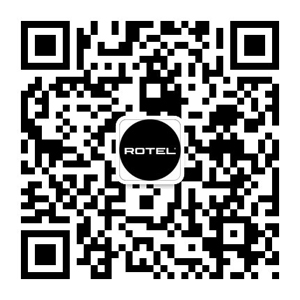Rotel Support
We are here to help you with any questions you might have about your Rotel products and devices, or we can offer insight into the world of sound and sound quality.
It can be music, comedy, sports, or any kind of radio broadcasts that are streamed over the Internet in various bit rate forms, from low to very high quality. Internet radio may also be referred to as web radio, streaming radio, net radio, or e-radio. The ability to stream these signals over the Internet allows people to hear radio broadcasts from virtually every corner of the planet, a feat that is just not possible by using traditional radio transmitters. As of the writing of this FAQ list, there are nearly 20,000 Internet radio stations.
Some tuners/receivers come equipped to display RDS (sometimes called RBDS or Radio Broadcast Data System), which is a text display, usually in the form of a song title, artist name, station call letters, or format. More adventurous information might include a scrolling message saying "be caller number 10 now and win $100!". RDS is widely used in Europe, where it was introduced in 1987 (It didn't debut in the U.S. until 1993). Not all stations use RDS, and those that do may not offer full RDS service. In addition, the functions may not work properly during poor reception. RDS features ordinarily include RDS search, format search (PTY), traffic announcement search (TA), emergency program reception, alternate frequency (AF), and automatic clock adjustment (CT).
Signal sensing is most often a circuit that turns on the main power when a electrical signal is applied. An example is the auto-on function in a subwoofer or our custom installation amplifiers. When the receiver or preamp is turned on and an audio signal is present the subwoofer or power amplifier turns on. If there is no audio for a period of time, the amplifier will then shut off automatically.
Sum-to-mono combines the left and right audio input signals of the power amplifier to provide a mono signal output to the speakers. This is desired when there is no real need for a stereo pair of speakers such as in a narrow hallway, or in very a large open area such as a hall.
If you select <Quick> from the menu when you then turn the product to standby the last item that you were listening is retained. Accordingly, when you press standby again the product will start up at the last item that you were listening to. Keep in mind that this means you will continue to consume broadband usage when the product is configured in this mode. Although pre-selected, you will have to restart music files being played by the Media Player or from CD; this is normal.
Many Rotel surround receivers include an amplifier redirect feature that allows you to customize your amplification based on your system.
For 5 channel receiver models, the redirect feature means it is possible to connect a more powerful amplifier for the Front Main speakers while the front channels of the receiver are “redirected” to power the Center Back speaker(s) in the system.
For the 7 channel receiver models RSX-1067, it is possible to utilize the built-in center back amplifiers of the RSX-1067 to power a set of speakers in a second zone when the home theater is configured for 5.1 audio.
For the 7 channel receiver models RSX-1560 and RSX-1562, in addition to redirecting the center back amplifiers to one of the remote zones, another option is to redirect these amplifiers to power the front channels in a biamp configuration, so you can utilize 2 channels of amplification per speaker.
The RDV-1040 utilizes a high-bit/high-sampling 10-bit 54MHz video digital to analog converter.
The RDV-1050 utilizes a high-bit/high-sampling 12-bit 108MHz video digital to analog converter.
The RDV-1060 utilizes a 12-bit/54MHz video digital to analog converter.
扫一扫以下二维码或者搜索微信公众号即可关注,获取最新鲜的ROTEL资讯!
微信公众号:rotel-hifi
